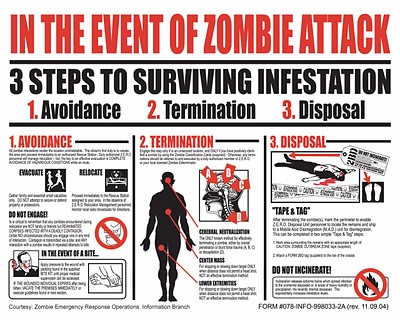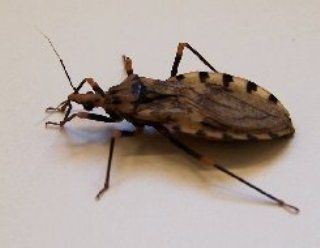Tag Archives: populations
Experts say Chagas disease is ‘new HIV/AIDS of the Americas’
The New York Times reports experts from Baylor College of Medicine, Houston, Texas noted that nearly 8 million people have contracted the disease in the Americas and that most sufferers live in Bolivia, Mexico, Columbia and Central America. Fox News reports experts are worried that the disease that was once found mainly in Latin America is spreading to the U.S due to travel and immigration. About 30,000 people in the U.S. are believed to be infected with Chagas.
According to Daily Mail, the disease was named after a Brazilian doctor Carlos Ribeiro Justiniano Chagas, who discovered it in 1909. The disease is listed among the Neglected Parasitic Infections in the world. The list includes five other parasitic infections identified as top priority for public health action. Daily Mail reports experts say more than 10,000 people died of Chagas disease in 2008.
Chagas, like AIDS, has been linked to poverty and poor living conditions. The disease is found in the United States mostly among immigrants. Chagas disease is difficult to detect and symptoms may take several years to emerge after infection. If the infection is detected early, it can be successfully treated by an intensive course of drugs. But if detected late, the disease is difficult or impossible to cure. The New York Times reports that drugs for treating the disease are not as expensive as AIDS drugs but there are shortages in developing countries.The long period of incubation of the disease makes it difficult to detect it and the illness is often left untreated.
All blood banks in Latin America screen for traces of the disease. Daily Mail reports blood banks in the U.S. began screening in 2007.
Chagas infection is transmitted by the bite of reduviid blood suckling bugs called Triatomine bugs. The species are black wingless insects about 20 mm in length and are commonly known as “kissing bugs.”
When the bug bites its victim, it releases a single-celled parasite, called Trypanosoma cruzi into the blood stream. The parasite is closely related to the trypanosomes that cause African Sleeping Sickness. According to The New York Times, this explains why Chagas is sometimes called “American trypanosomiasis.”
The course of the disease goes through two phases, the acute and the severe stages.
The Huffington Post reports that even though there are significant similarities between Chagas and HIV/AIDS, there are also strong distinctions. HIV/AIDS is a sexually transmitted viral disease but Chagas disease is caused by a parasite called Trypanosoma cruzi. While HIV/AIDS attacks the body’s immune system, Chagas primarily targets the heart and digestive organs.
In the acute phase of illness, the disease simply incubates and may take years for symptoms to emerge. In the severe stage, symptoms such as constipation, abdominal pains, digestive disturbances and cardiac arrhythmia develop. The Huffington Post reports the National Institute of Health (NIH) says complications from Chagas disease can include inflammation of the heart, esophagus and colon, as well as irregular heartbeat and heart failure.
The parasite finally makes it way to the victim’s heart where it multiplies rapidly. Daily Mail reports that about a quarter of people who contract Chagas develop enlarged heart or intestines that may burst and cause sudden death.
According to The Huffington Post, the NIH reports that although it may “take more than 20 years from the original time of infection to develop heart or digestive problems,” the onset of symptoms can be dramatic.
Experts have long speculated that Charles Darwin contracted the illness during his five year trip on HMS Beagle when he was a young man in his 20s. Darwin died of heart failure 47 years after the voyage. He reported symptoms that experts think may be symptoms of Chagas, though others believe that some of the symptoms, such as heart palpitations, were psychogenic in origin.
Darwin, however, mentioned in his journal that he was bitten by a “wingless black bug” while traveling in South America during the voyage of HMS Beagle.
Zombie Survival Kit and Preps
Emergency Survival Kit

An emergency survival kit is a collection of supplies which have been prepared to aid in the survival of a disaster or emergency situation such as hurricanes, earthquakes, and other natural disasters. A good emergency survival kit contains tools to provide the basic survival necessities such as shelter, food, water, and first aid. It this case we want to prepare a kit specialized for a zombie encounter.
There a few types of survival kits; stashes, mini-kits and bug-out kit. A stash is a large collection of horded food and supplies usually set up for long term use under siege situations. Mini kits hold basic supplies and are designed to fit in small places such as a motor vehicle. Bug-out kits are portable survival kits also known as “Personal Emergency Relocation Kits”; these are used for quick escape and survival for a few days. Bug-out kits usually also contain tools that aid in gathering resources for more prolonged times after limited supplies run out.
Before creating an emergency zombie survival kit or kits you must ask yourself a few questions: What type of kit should I make? How many people will I be providing for? Where should I keep my kit? How much food and water do need? Where would I go under extreme conditions? ECT… Look at your surroundings. If a zombie outbreak were to happen right now are you in a safe location. This is a great deciding factor for preparing your kit. Think of any situation that could happen and consider preparation for the most probable dangers. What will you need in your kit? Every situation is different for everyone and kits can be modified for specific purposes.
Location matters, it might be smart to keep smaller emergency survival kits in your car or at work. Also you might want to keep different styles of kits depending on your location, for example: If you live in the mountains away from large populations in a fairly zombie proof home you might consider keeping a long term stash. On the other hand if you live in an inner city location in a not so zombie proof home you might want to rely more on a light bug-out kit to get you to a safer location.

Basic Tools and Supplies
 Before specializing in any type of zombie survival kit for emergency situations it is important to know what items are needed for basic survival. To set up a good survival kit foundation you should know what the most fundamental items needed in almost all disaster situations are. There is a list from the homeland security website;
Before specializing in any type of zombie survival kit for emergency situations it is important to know what items are needed for basic survival. To set up a good survival kit foundation you should know what the most fundamental items needed in almost all disaster situations are. There is a list from the homeland security website;
Recommended Items to Include in a Basic Emergency Supply Kits:
-Water, one gallon of water per person per day for at least three days, for drinking and sanitation
-Food, at least a three-day supply of non-perishable food
-Battery-powered or hand crank radio and a NOAA Weather Radio with tone alert and extra batteries for both
-Flashlight and extra batteries
-First aid kit
-Whistle to signal for help
-Dust mask, to help filter contaminated air and plastic sheeting and duct tape to shelter-in-place
-Moist towelettes, garbage bags and plastic ties for personal sanitation
-Wrench or pliers to turn off utilities
-Can opener for food (if kit contains canned food)
-Local maps
Additional Items to Consider Adding to an Emergency Supply Kit:
-Prescription medications and glasses
-Infant formula and diapers
-Pet food and extra water for your pet
-Important family documents such as copies of insurance policies, identification and bank account records in a waterproof, portable container
-Cash or traveler’s checks and change
-Emergency reference material such as a first aid book survival manuals
-Sleeping bag or warm blanket for each person. Consider additional bedding if you live in a cold-weather climate.
-Complete change of clothing including a long sleeved shirt, long pants and sturdy shoes. Consider additional clothing if you live in a cold-weather climate.
-Household chlorine bleach and medicine dropper – When diluted nine parts water to one part bleach, bleach can be used as a disinfectant. Or in an emergency, you can use it to treat water by using 16 drops of regular household liquid bleach per gallon of water. Do not use scented, color safe or bleaches with added cleaners.
-Fire Extinguisher
-Matches in a waterproof container
-Feminine supplies and personal hygiene items
-Mess kits, paper cups, plates and plastic utensils, paper towels-Paper and pencil
-Books, games, puzzles or other activities for children
 These items are great for a basic kit. Creating an emergency survival with these supplies would be great for smaller S 1 or maybe even S 2 zombie emergencies. These are usually caused by a low grade zombie and everything is usually controlled and back to normal after a few days. Just board up your windows and doors and wait it out.
These items are great for a basic kit. Creating an emergency survival with these supplies would be great for smaller S 1 or maybe even S 2 zombie emergencies. These are usually caused by a low grade zombie and everything is usually controlled and back to normal after a few days. Just board up your windows and doors and wait it out.
In larger zombie outbreaks or outbreaks caused by higher grade zombies, the situation gets dramatically worse. It is unlikely that a small survival kit is enough to handle a large zombie up rising. A larger stash would allow you to last quite a bit longer check out the under siege section for more details. Most likely unless you have a self sustaining fortress you will need to Transport to a safer location.
Zombie Survival Kit
 Unlike most disasters the biggest difference is that in almost any zombie emergency situation some degree of combat is involved. In order to have the advantage in zombie combat, it is important to have some kind of weapon in your emergency zombie survival kit. As stated before every situation is different and additions to the basic kit should follow the specific situation.
Unlike most disasters the biggest difference is that in almost any zombie emergency situation some degree of combat is involved. In order to have the advantage in zombie combat, it is important to have some kind of weapon in your emergency zombie survival kit. As stated before every situation is different and additions to the basic kit should follow the specific situation.
Bug out kits should be kept light considering that some of the time on foot might involve running away from hordes of zombies. If additional clothes are in the kit they should be tight fitting and hair should be short or tied down to prevent being snagged by undead fingernails.
Do research on different types of items and see what is best for your particular situation. Try to get items that are useful in more that one situation. For example an axe is great for chopping wood but it is also good at chopping zombie flesh. A crowbar is a good weapon but can also be used to pull out nails or “jimmy” doors, or even aid in climbing.

